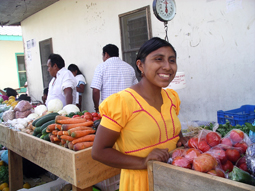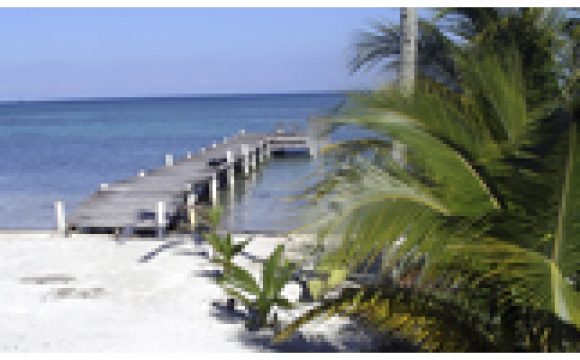
This article appeared in ‘Global Travel Adventure Culture’ magazine in January 2006
Alice Mutasa discovers an unspoilt world among the coral cayes and jungles of southern Belize…..
The tiny Cessna plane tilts up off the grassy track that passes for a runway in Belize City airport & heads down the coast, packed with a noisy mixture of locals & tourists. I have the odd sensation of being in an airborne minibus, as I gaze out at the seemingly endless swathes of unspoilt jungle to the west; misty mountains rearing up in the distance, and the ragged coastline to the east, the outline of the Belize barrier reef clearly visible through the shimmering turquoise sea. My first pleasant shock is the complete absence of development along the coast; we are flying above an almost unbroken coastline of mangrove swamps; no man-made beaches; no hotels; no high rise developments.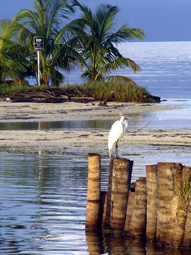
I am heading down to Punta Gorda (‘PG’) in the Toledo district of southern Belize, to spend two weeks with a marine conservation project; Reef Conservation International (ReefCI), which collects data for ‘Reef Check’ – a global ocean conservation organisation undertaking work to save coral reefs. ReefCI also works in partnership with a local group; Toledo Association of Sustainable Tourism and Empowerment – Sapodilla Cayes Marine Reserve (‘TASTE’).
After a slightly bumpy landing at Punta Gorda airstrip (reminiscent of an overgrown tennis court), we are met by Polly Wood; a diminutive, sparky, energetic Englishwoman, who founded ReefCI in mid-2004. The project’s base in Punta Gorda is a large, comfortable house in a residential area, where we spend one night before heading out to Franks’ Caye in the Sapodilla Cayes Marine Reserve.
Guests at ReefCI undertake survey dives, which involve collecting information on coral, fish & invertebrates, which is then submitted to Reef Check headquarters for inclusion in global coral reef status reports; to TASTE; the Department of Fisheries in Belize, and Green Reef (a local organisation dedicated to the conservation of Belize’s marine and coastal resources).
Splendid Isolation
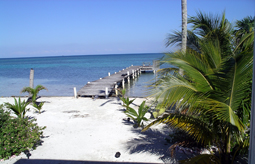 Franks’ Caye – ReefCI’s base from Monday to Friday – is well out of the reach of mobile phone reception; there is no TV, and electricity is provided by an erratic generator, (although Polly tells me they have now installed a hot water system). In fact, there is nothing but us; Edgar, the island’s caretaker; the sea & the coral reef with all its wonders. Accommodation consists of several wooden cabanas (each with obligatory veranda & hammock), and there is a turtle nesting site at one end of the island. It’s all quite basic, but who needs luxury when the first sight on waking each morning is gently waving palm trees framing the early morning sunlight shimmering on the Caribbean sea?
Franks’ Caye – ReefCI’s base from Monday to Friday – is well out of the reach of mobile phone reception; there is no TV, and electricity is provided by an erratic generator, (although Polly tells me they have now installed a hot water system). In fact, there is nothing but us; Edgar, the island’s caretaker; the sea & the coral reef with all its wonders. Accommodation consists of several wooden cabanas (each with obligatory veranda & hammock), and there is a turtle nesting site at one end of the island. It’s all quite basic, but who needs luxury when the first sight on waking each morning is gently waving palm trees framing the early morning sunlight shimmering on the Caribbean sea?
The ethos of ReefCI is very different to many other groups that run marine conservation projects. In particular, the guests do as many or as few survey dives as they wish, with the rest of the diving made up of fun dives. Polly’s view is that guests have paid to be there, and have come to relax and enjoy themselves on what may be their main holiday of the year. There are only 4 guests for the entire two weeks we are there, and the whole trip has the relaxed atmosphere of being on holiday with a bunch of friends. In fact, it quickly becomes clear that the philosophy at ReefCI is ‘do exactly what you like’..….
During our second week on Franks’ we are joined by Luis & Clayton, a couple of enthusiastic, energetic local youngsters from the ‘Youth Path’ project sponsored by ReefCI, who are being trained by Polly to Dive Master level; skills which will give them a valuable opportunity to become employed in the local tourist industry.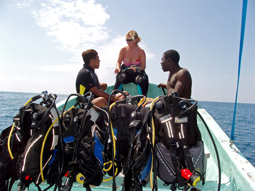
Sunsets & Reefs
All of the diving is optional, but I astonish myself on several mornings by getting up unthinkably early, simply in order to experience the sublime beauty of diving at dawn. There is nothing quite like slipping into the water with the pale orange Caribbean sun gently rising above the horizon, just in time to find the reef creatures waking up & going about their early morning business. Then it’s back to Franks for steaming hot coffee and a slap-up breakfast outside on the veranda, overlooking the sea & the turtle-nesting island. Next comes a spot of lazing in a hammock, or sunbathing on the jetty until it’s time for the next dive…… Lunch is often a relaxed two hour break between dives on one of the nearby cayes; maybe idyllic Lime Caye; or Seal Caye, a tiny island with a beach made entirely from hundreds of conch shells. And at the end of every day we are treated to the spectacle of the sun’s burning disc bleeding its last rays across the evening sky as it melts into the Caribbean sea. There are often night dives in the evening, and while this means having to wait a little bit longer for that ice-cold beer or glass of the superb local ’1 Barrel’ rum, believe me it tastes even better after a night dive….
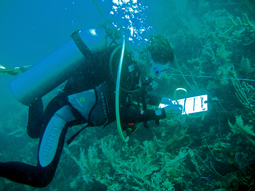 One of the very best things about diving here is that there are no other divers; for two weeks we quite literally have the reefs all to ourselves – what a privilege compared to the crowds of boats & divers at many other dive destinations! And while they may not be found in the same quantities as some other places, all the usual exotic Caribbean reef life is here. Although ReefCI are based in the Sapodilla Cayes because conservation work is needed in this area, much of the reef is surprisingly healthy, with a wealth of beautiful coral; gorgonian sea fans and bright purple sponges everywhere. While we are there we help Polly & the team identify new dive sites to carry out the Reef Check surveys, so there is also a certain excitement about diving ‘uncharted territory’.
One of the very best things about diving here is that there are no other divers; for two weeks we quite literally have the reefs all to ourselves – what a privilege compared to the crowds of boats & divers at many other dive destinations! And while they may not be found in the same quantities as some other places, all the usual exotic Caribbean reef life is here. Although ReefCI are based in the Sapodilla Cayes because conservation work is needed in this area, much of the reef is surprisingly healthy, with a wealth of beautiful coral; gorgonian sea fans and bright purple sponges everywhere. While we are there we help Polly & the team identify new dive sites to carry out the Reef Check surveys, so there is also a certain excitement about diving ‘uncharted territory’.
One day when we are finishing up one of the survey dives, my first Giant Manta Ray glides silently by overhead – an awesome, huge, breathtakingly graceful dark shadow, at least the size of my living room – it is one of those diving moments when you want to scream ‘oh wow look at that!’, but somehow the silence forced by the regulator in your mouth seems a more fitting reaction (although the ability to find ways of conveying ‘oh wow look at that!’ without words is a skill that many divers have developed to perfection…..). On another dive we are treated to the sight of three enormous spotted eagle rays coasting along in silent formation…….
Drinking and Diving
Current work being undertaken by ReefCI includes establishing a protected area for Caribbean spiny lobster, which will enable the lobster population to be farmed in a sustainable manner. Other work includes a conch-tagging project aimed at protecting their breeding grounds; surveying coral bleaching that occurred towards the end of 2005; work on spawning fish aggregations which attract the whale sharks; water quality assessment; plankton study, and turtle monitoring.
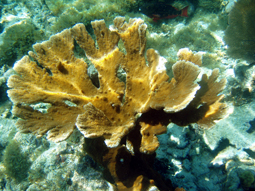 ReefCI is aimed at all levels of diver; including non-divers who want to learn in a beautiful relaxed setting (sure beats a gravel pit in Leicestershire in the middle of winter…). During the two weeks we are there, Steve from Doncaster & my friend Bettina both progress from beginner to PADI Advanced level, although be warned that passing any diving qualification at ReefCI requires the unfortunate victim to undertake the (in)famous ‘snorkel test’, which involves drinking as much beer or rum as Polly can pour down your throat through a snorkel. In front of an audience. With cameras to capture the moment forever…..
ReefCI is aimed at all levels of diver; including non-divers who want to learn in a beautiful relaxed setting (sure beats a gravel pit in Leicestershire in the middle of winter…). During the two weeks we are there, Steve from Doncaster & my friend Bettina both progress from beginner to PADI Advanced level, although be warned that passing any diving qualification at ReefCI requires the unfortunate victim to undertake the (in)famous ‘snorkel test’, which involves drinking as much beer or rum as Polly can pour down your throat through a snorkel. In front of an audience. With cameras to capture the moment forever…..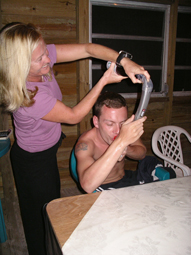
On Friday it’s back to Punta Gorda where we head out to sample the nightlife. ‘Ocean View’ is a wooden shack overlooking the sea, where a local band is playing some pretty competent cover versions of reggae classics, and local Belizean music (a soca-influenced Latin-style groove.…). We manage to sink several ‘Belikin’ beers, but unfortunately we leave before it starts to get really lively as we have an early start in the morning (like much of the Caribbean and Latin America, Belizeans like to party; long, hard and late).
Melting pot
No weekend in PG is complete without sampling the Saturday morning market. One of the things that makes me feel instantly comfortable here is that it is, quite simply, a ‘real’ place. There is very little tourism here to speak of; it’s just a normal town full of normal people. The Saturday market is bustling, lively, colourful, noisy, with chaotic piles everywhere of brightly coloured melons; improbably large oranges; lemons; pineapples, cassava; coconuts, sweet potatoes, and a number of other things I cannot identify. Everything looks bigger and brighter and more healthy than the versions we see in the supermarkets in the UK.
Belizean culture is a fascinating diverse ethnic mix, which includes descendants of the original Maya Indians; the dominant Creole culture (descendents of African slaves and British pirates); Mestizos (people of mixed Indian and Spanish heritage), and the Garifuna people (of American Indian and African descent). Nowhere is this rich cultural diversity more apparent than in southern Belize, and PG in particular, with an influx of Guatemalans from across the nearby border adding to the mix, many of whom come to sell their goods in the Saturday market.
From Ancient History to Beaches and Bars
We spend the rest of the morning visiting the Mayan ruins of Nim Li Punit, just outside PG. Very little is left here of the original structures, and indeed much of it is simply stone walls. However, our guide Desmond brings the whole place alive with his descriptions of the original buildings and of what life there might have been like. His explanation of a large grassy area surrounded by stone amphitheatre-style seating is particularly gruesome & bizarre; this was apparently the venue for some kind of Mayan sport, which involved the winner being sacrificed to the gods. The most perplexing detail for me being that competitors would still actually try to win the game……
After this we set off on a short trek through the jungle to Blue Creek, and hurl ourselves into the bright green-blue of the river. I lie on my back in the water and gaze up at the dizzyingly tall trees surrounding us, full of the cries of tropical birds which echo around the valley, and I can see why Polly gave up an executive lifestyle to come & live here……
Another short Cessna plane ride takes us north up the coast to Placencia; a tiny town built on a long narrow peninsula. The main ‘street’ is just a path with wood-frame houses and shops on either side (apparently the narrowest main street in the world!); the rest of the town consists of a few bars and cabanas on the beach; a lagoon and a tiny airstrip. The entire town appears to be designed for tourists – albeit of the most laid-back hippy kind. Despite feeling somewhat crowded for its size, it is definitely a pleasant place to hang out & sink a few beers in a hammock on the beach, and there are a number of decent places to eat, drink, and listen to music.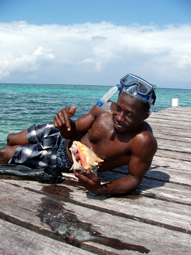
Wet & Wild
“Just keep your back and legs straight; your arms across your chest, and let yourself go – don’t worry I’ll catch you!” yells our guide, Doyle, from somewhere beneath me, at the bottom of a narrow and very slippery slide carved out of the rock by the river pouring through it. ‘Yeah right’, I think. I hang back & watch while the largest and heaviest member of our group goes first. If Doyle doesn’t catch him, there is quite a substantial drop below the overhang into a rock pool below, and some nasty-looking rocks. We all hold our breath as he hurtles down the slide, and yes – despite being half his size – Doyle does catch him (he explains later it’s a technique that requires some learning). Rock sliding is great fun once you get the hang of it, and many of the slides end in an exhilarating plunge into the cool water of a pool below.
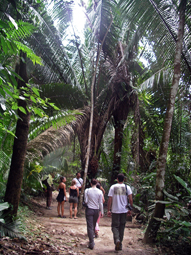 We are in the middle of a jungle trek through Cockscombe Basin Wildlife Sanctuary – 98,000 acres of lush tropical jungle ringed by the Cockscomb Mountains – and have been walking for a couple of hours through the jungle before arriving at the river. The jungle itself takes my breath away; I feel as if I am one of the little people in ‘Gullivers’ Travels’, as I crane my neck up at the impossibly tall trees soaring above me, and the thousands of enormous palm leaves like giants’ hands. Everything looks out of proportion somehow; and the bright rich green shades of the vegetation dazzle my eyes. Part of the trek follows the route of the river – by way of a number of rock slides; wading waist deep in the water; scrambling over rocks, and a wonderful and welcome plunge under a waterfall; which pounds our backs & heads like a fierce massage.
We are in the middle of a jungle trek through Cockscombe Basin Wildlife Sanctuary – 98,000 acres of lush tropical jungle ringed by the Cockscomb Mountains – and have been walking for a couple of hours through the jungle before arriving at the river. The jungle itself takes my breath away; I feel as if I am one of the little people in ‘Gullivers’ Travels’, as I crane my neck up at the impossibly tall trees soaring above me, and the thousands of enormous palm leaves like giants’ hands. Everything looks out of proportion somehow; and the bright rich green shades of the vegetation dazzle my eyes. Part of the trek follows the route of the river – by way of a number of rock slides; wading waist deep in the water; scrambling over rocks, and a wonderful and welcome plunge under a waterfall; which pounds our backs & heads like a fierce massage.
Our guide Doyle possesses an incredible wealth of knowledge about the wildlife and plants in the Sanctuary, pointing out particular birds and plants on the way, such as the seed pod that dyes one’s lips red and was traditionally used as lipstick by local women, or the Gumbo Limbo tree; known locally as the ‘tourist tree’, because of its red peeling bark…..!
We negotiate the final leg of the trek floating down-river sitting in the inner tubes of tyres (‘river-tubing’). There are a few hairy moments involving negotiating low overhanging branches (or failing to negotiate them, in some cases…), but generally it is a beautifully relaxing opportunity to gaze up at the jungle or watch the wildlife from a closer vantage point, while drifting slowly past at a pace more akin to theirs…..
Natural Wealth
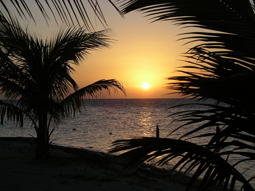 Despite its tiny size, Belize is a country of exhilarating diversity and contrast; vast stone remnants of the ancient Mayan culture litter the landscape; and the descendants of the Maya still make up around 10% of the population. It is a land of wild untamed jungles; idyllic white-sand coral islands; an abundance of plant and animal life, and the second-longest barrier reef in the world. Caribbean and Latin American cultures mingle and collide here, and its’ people are among the warmest, most open and tolerant I have met anywhere. It is nevertheless still a very poor country, with tourism being a major source of income. Fortunately the government has encouraged the preservation of the country’s natural resources, both marine and terrestrial, through the establishment of a number of reserves and protected areas. With the rise in eco-tourism, and a steady influx of visitors who come here to appreciate the unspoilt beauty of this stunning country, it is to be hoped that Belize can continue to resist the more exploitative and destructive forms of tourism.
Despite its tiny size, Belize is a country of exhilarating diversity and contrast; vast stone remnants of the ancient Mayan culture litter the landscape; and the descendants of the Maya still make up around 10% of the population. It is a land of wild untamed jungles; idyllic white-sand coral islands; an abundance of plant and animal life, and the second-longest barrier reef in the world. Caribbean and Latin American cultures mingle and collide here, and its’ people are among the warmest, most open and tolerant I have met anywhere. It is nevertheless still a very poor country, with tourism being a major source of income. Fortunately the government has encouraged the preservation of the country’s natural resources, both marine and terrestrial, through the establishment of a number of reserves and protected areas. With the rise in eco-tourism, and a steady influx of visitors who come here to appreciate the unspoilt beauty of this stunning country, it is to be hoped that Belize can continue to resist the more exploitative and destructive forms of tourism.
© Alice Mutasa 2005
Reef CI website:

